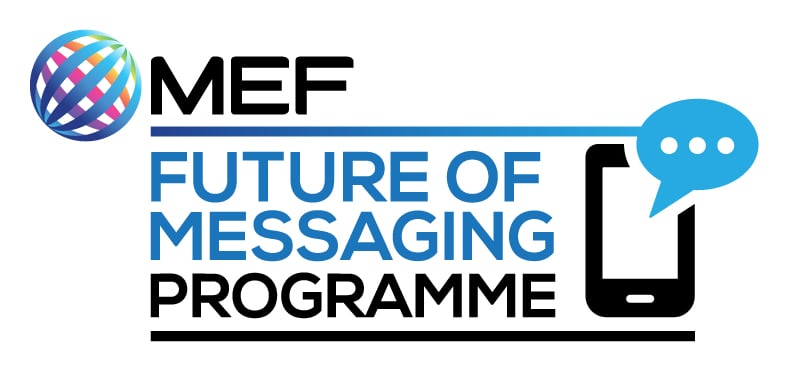Grey route messaging is a huge problem for the A2P industry – costing it nearly $18 billion in 2016 alone. Nick Lane, Chief Insight Analyst at mobilesquared discusses how the industry can work to realise its true potential.
A2P messaging represents a massive opportunity, but right now it has the aura of an industry that is gold-plated as opposed to pure gold. If you sliced open the marketplace today it would be filled with grey.
Grey-route traffic will account for 65% of the A2P messaging during 2016, but will only generate around one-quarter of total revenues. Had this grey traffic already been converted into white traffic, it would generate an additional $17.9 billion revenues for 2016, and taken the total market to over $31 billion.

So maybe it’s not educating, but actually convincing mobile operators about the real opportunity of A2P messaging, and perhaps, encouraging them to once again place their faith back in the revenue-generating potential of the good-old SMS.
If we take off what grey-route traffic is expected to generate in 2016 from its potential earnings, it leaves lost revenues of $14.6 billion. That is what the molecular diagnostic testing segment of the Labelling, Probes and Molecular Diagnostics market is expected to be worth in 2016.
OK, so maybe not the most relevant comparison, but it supports the very powerful point that grey-route traffic is costing the A2P ecosystem the equivalent of an entire industry.
So what needs to be done?
It sounds very simple, but to effectively convert grey-route traffic into revenue-generating white-route traffic, and release the revenue-generating potential of A2P traffic across the entire A2O ecosystem, mobile operators need to deploy a next-generation SMS revenue assurance platform.
Presently, just 15% of mobile operators have invested in the platform and can claim to be enjoying the associated revenues of white-route traffic, while also comforted by the fact grey-route traffic (and the likelihood of spam, and all other associated threats) have been blocked from their customers.
But it begs the question of why have mobile operators been so slow to exploit the A2P messaging opportunity. Our research concludes that a disconnect has developed between traffic levels and market revenue discussed by the A2P community, and what mobile operators are actually seeing. This has resulted in mobile operators forming a risk-averse A2P messaging strategy.
The A2P industry believes mobile operators require educating when it comes to A2P messaging. But given SMS peer-to-peer messaging has been a cash cow for every mobile operator globally, mobile operators will have the greatest understanding of any company about the virtues of a sound a messaging strategy.
So maybe it’s not educating, but actually convincing mobile operators about the real opportunity of A2P messaging, and perhaps, encouraging them to once again place their faith back in the revenue-generating potential of the good-old SMS. After all, they have heard for a number of years that SMS is dead. Now it’s a case of the SMS is dead, long live (A2P) SMS, so they would be understandably reticent to invest in a platform until they were 100% convinced of its return on investment.
Admittedly, their users are migrating from SMS to OTT communications and messaging apps like WhatsApp, WeChat, and more recently Facebook Messenger. And yes, this has had a destructive impact on peer-to-peer-based messaging revenues for mobile operators. But A2P messaging revenues presents mobile operators with a ready-made opportunity to finally offset that decline in SMS revenues with A2P SMS.
Because that messaging growth will come from businesses, enterprises, brands, placing increasingly more value in the power of an SMS in the coming years. Research into mobile marketing (just across UK businesses- Textlocal) reveals that around three-quarters of businesses are now more likely to use SMS than email.
Nick Lane
Chief Insight Analyst
Mobilesquared


That’s because 90% of messages are read within 3 minutes (yes, that’s an old mobilesquared stat from 2010), and no other platform can even come close to that figure.
By 2020 there will be over 9 billion active mobile subscriptions around the world and on average every single one will receive at least one A2P message per day.
Still looking at the world in 2020, we forecast more than 50% of mobile operators would have made the investment in a next-generation SMS revenue assurance platform, and the impact this will have on limiting grey-route traffic will be transformative. And the gold-plating can finally be removed to reveal pure gold.
A2P Messaging Forecast Databook covering 200 markets now available – Exclusive MEF Member discount
Last month MEF hosted a webinar in partnership with mobilesquared, looking at Global A2P messaging forecasts by country 2015-2020. The full databook including all 200 country forecasts is now available to purchase for £1250
MEF Members contact us for your exclusive 20% discount code.





